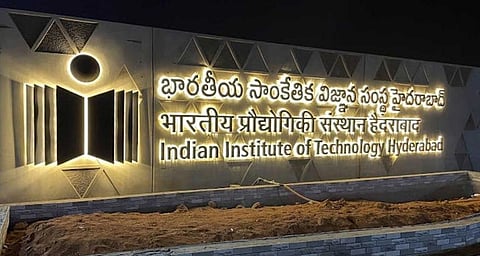

Researchers from the Indian Institute of Technology (IIT) Hyderabad have developed an Artificial Intelligence (AI)-based tool that enables oncologists to diagnose and analyse brain tumours non-invasively, eliminating the need for risky surgical biopsies.
The innovative computational platform, named RadGLO, extracts crucial genetic-level insights directly from standard MRI scans, paving the way for personalised and non-invasive treatment planning.
In their study, published in the journal Precision Oncology (October 2025), the IIT Hyderabad team said that the AI platform could transform brain tumour diagnosis, particularly for gliomas, which are among the most common primary brain tumours.
Currently, oncologists depend on conventional brain MRI to locate a tumour, followed by a surgical biopsy to analyse its complexity and aggressiveness. However, this invasive approach involves drilling a hole in the skull to collect a tissue sample — a process that carries significant risks.
With advances in computational imaging, radiomics has emerged as a non-invasive alternative capable of extracting high-dimensional, quantitative data from MRI scans. These radiomic features, derived from tumour texture, shape, and intensity, can provide insights equivalent to genetic analyses, helping clinicians identify tumour grade, evaluate treatment response, and predict patient survival.
Building on this, the IIT-H researchers developed two key tools — RaSPr (Radiomic Survival Predictor) and RadGLO (Glioma Radiomics Analysis Platform).
“These radiomic features are proving to offer insights comparable to those obtained from full genetic analyses, helping to identify the tumour’s grade (aggressiveness), predict how a patient will respond to treatment, and forecast survival outcomes,” the researchers said.
RaSPr uses radiomic features to categorise patients into high-risk (poor survival) and low-risk (better survival) groups, enabling doctors to tailor treatment strategies accordingly.
Meanwhile, RadGLO serves as an interactive web platform that allows doctors and researchers to identify radiomic markers distinguishing between high-grade and low-grade gliomas.
Furthermore, the study notes that RadGLO links subtle MRI features to nearly 20,000 genes, providing insights into the genetic mechanisms driving tumour progression.
The platform enables clinicians to upload a patient’s MRI scan to receive automated risk predictions and detailed molecular or genetic correlations.
According to the research team — Kavita Kundal, Dr. K. Divya Rani, Vinodini D, Dr. Neeraj Kumar, and Dr. Rahul Kumar — this innovation will empower the medical community to adopt non-invasive methods for cancer prognosis, marking a significant leap toward precision and personalised oncology care.